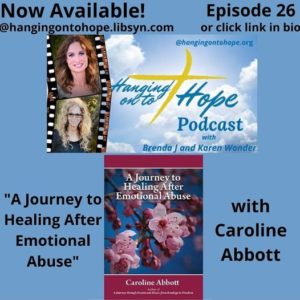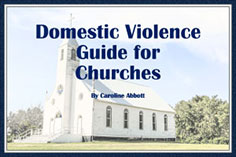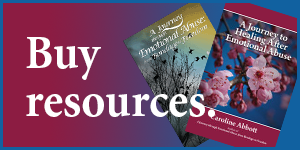
I recently had the honor of being interviewed by Brenda J and Karen Wonder on the Hanging Onto Hope Podcast. These ladies have been through abuse and know what they are talking about. What a joy to share my story with them! I’d love you to check out the podcast. Click here to hear our 32 minute interview. Below I will share the questions they asked, and the time stamp where I answered them.
- Please tell us about yourself and what prompted you to write A Journey to Healing After Emotional Abuse (1:11).
- Leslie Vernick says emotional abuse systematically degrades, diminishes, and can eventually destroy the personhood of the abused. An emotionally destructive relationship is not usually diagnosed by looking at a single episode of sinful behavior (which we’re all capable of), but rather repetitive attitudes and behaviors that result in tearing someone down. This behavior is usually accompanied by a lack of awareness, a lack of responsibility and a lack of change. It can be so covert. Any other ways a victim can determine if their relationship is destructive (3:12)?
- You say in your book: “I was married for twenty years to an abusive man who claimed to be a Christian. Because of my faith, I took my vow to remain married until “death do us part” very seriously. My goal was to remain married no matter the cost to myself. As a result, I tried to ignore his abusive actions for many years. When my life became unbearable, I was finally honest with myself.” Karen and I can relate to this, and we want to encourage our listeners to get honest with themselves and be able to tell themselves the truth. What ways can you suggest that they can start doing that (6:19)?
- You say in your book: “Your abuser’s goal was to lower your self-esteem so he could gain control over you. Did you begin to feel less attractive over time, less worthy of his love? Did you begin to think even his abuse was your fault? Maybe if you had done something more perfectly, or if you hadn’t said . . . then he wouldn’t have called you names . . . or made you feel worthless.” That is very relate-able to me, and I think will be to many listeners. Most victims at some point not only feel responsible but end up carrying all the responsibility for the relationship. Can you explain that dynamic a little more (8:50)?
- “In Job Chapters 38–41, God demonstrates His strength and wisdom, and shows Job Himself. Philip Yancey gives three answers to the question, “What is God up to in a world of such tragedy and pain?” (13:11)
- In your book you say: “Steven Tracy says one of the most empowering things you can do to get rid of shame that belongs to your abuser is to symbolically hand the shame back to him/her. In many Psalms the authors ask God to shame their abusive enemies. This had two purposes: to cause the abuser to be overwhelmed with shame for his or her sin so they would repent, and to bring utter destruction to the abuser if he or she didn’t repent. To hand shame to your abusers, ask God to overwhelm them with shame for their sins so they will repent, or that He will bring them to destruction if they won’t. Does this sound un-Christian to you? (19:14)
- The American Psychiatric Association, gives the following criteria for someone with narcissistic personality disorder: having an exaggerated sense of self-importance, expecting to be recognized as superior even without achievements that warrant it, exaggerating achievements and talents being preoccupied with fantasies about success, power, brilliance, beauty, or the perfect mate believing they are superior and can only be understood by or associate with equally special people requiring constant admiration. Also, having a sense of entitlement or expecting special favors and unquestioning compliance with their expectations taking advantage of others to get what they want and having an inability or unwillingness to recognize the needs and feelings of others, being envious of others and believing others envy them.” Anything you would add to this (22:11)?
- In her book “Dating After Trauma” you quote Emily Avagliano who contrasts unhealthy men to healthy men. I think this is important to talk about (26:00).
In conclusion, they read a picture of wholeness I describe in my book (31:32):
You give a picture of wholeness in your book I want to read: “Imagine you were once a beautiful ceramic jar, perfect and whole. If someone were to put a small lamp inside the perfect jar, how much light would shine out? Only a little bit, from the opening at the top. Now, picture the jar broken and shattered into many pieces. This is a picture of our lives broken by the abuse we have suffered. God can take the many broken pieces of our lives and glue them back together. However, the jar will no longer be perfect. It will now have holes in it where small pieces of ceramic were shattered or lost. It doesn’t look perfect on the outside any longer. Yet, what happens when the same small lamp is placed inside the broken ceramic jar? Light can now pour out through the holes where the broken places are. This is an allegory of our lives if we give them to God for healing. The light represents God and His wisdom and joy. We can share this light with others who experience the same pain we have experienced. I have empathy for other abuse victims and survivors (and even other stepparents) I never would have had if I had never walked in their shoes. I can be more help to them because of my brokenness, not in spite of it.”

I pray this interview will be helpful and a blessing to those of you trying to heal from abuse.
May you feel God’s unshakable love for you during this difficult time.
Caroline


